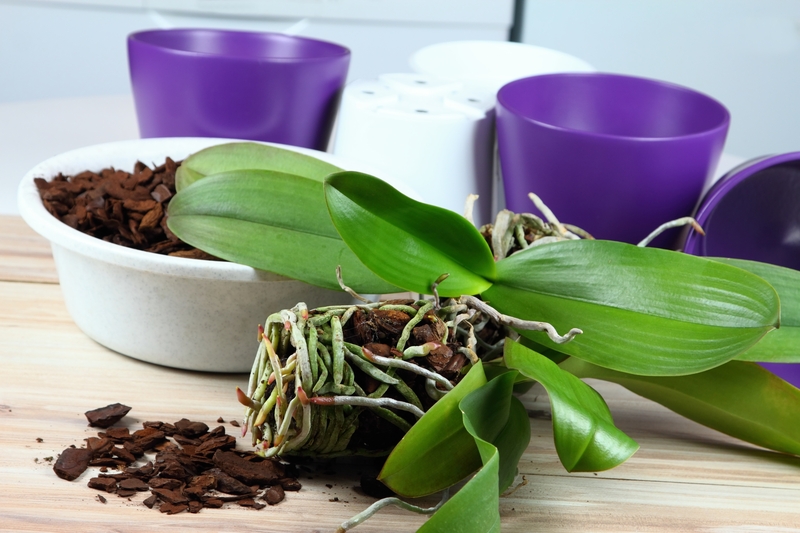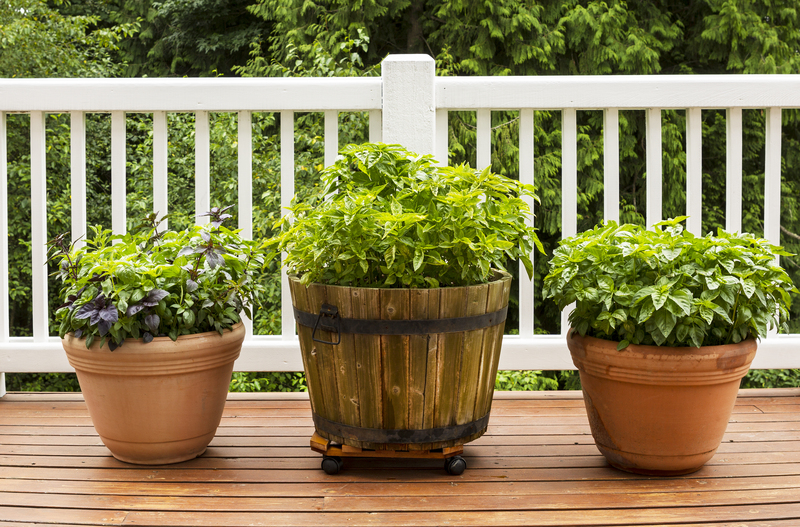Add Drama and Color With These Exotic Plants for UK Gardens
Are you yearning to give your UK garden a bold, vibrant flair? If so, embracing exotic plants is the perfect way to infuse drama and color straight into your outdoor space. While most traditional British gardens showcase roses, foxgloves, and lavender, introducing more unusual, tropical species can elevate your landscape from picturesque to spectacular. In this comprehensive guide, you’ll discover how to select, grow, and care for a wealth of exotic plants suitable for UK gardens – transforming your borders, containers, and beds with show-stopping color and architectural intrigue, no matter your experience level.

Why Choose Exotic Plants for Dramatic UK Gardens?
Adding exotic and dramatic plants to UK gardens isn’t just a matter of aesthetics. Here are the top reasons to embrace these extraordinary species:
- Unrivalled Visual Impact: Exotic plants often feature vivid flowers, spectacular foliage, and unique forms that command attention.
- Broad Palette of Colours and Textures: Bold splashes of red, orange, purple, and yellow combine with large, architectural leaves to create multidimensional borders.
- Extended Interest: Many exotic species bloom or display striking foliage for longer periods than traditional UK garden plants.
- Increased Biodiversity: Exotic varieties can attract pollinators and other wildlife, enriching your garden’s ecosystem.
- Conversation Starters: These plants offer intrigue and uniqueness, providing topics for discussion amongst guests and fellow gardeners.
Contrary to popular belief, you don’t need to live in a tropical climate to bring these plants home. With strategic selection and care, even the often unpredictable British weather can support a range of exotic showstoppers. Below, we explore some top choices and expert tips for creating your own dramatic and colorful exotic-themed garden in the UK.
Choosing the Best Exotic Plants for UK Gardens
Whether your goal is to add drama, instant color, or create a tropical oasis, it’s essential to select varieties that will thrive in the UK’s temperate conditions. Focus on plants known for their hardiness or suitability to container growing, allowing you to move them indoors for winter protection if necessary.
1. Canna Lilies (Canna indica)
Canna lilies are famed for their large, banana-like leaves and spectacular spikes of bold red, yellow, orange, or pink blooms. These flashy perennials inject an instant dose of the tropics into borders or garden pots. Modern hybrid varieties have been bred for improved hardiness and can survive most UK winters with a mulch of straw. Plant them in full sun for the best color and flower production.
2. Hardy Bananas (Musa basjoo)
If you seek genuine drama and architecture, the hardy banana is unbeatable. Musa basjoo copes well with the UK’s climate, surviving temperatures as low as -10°C. Its enormous paddle-shaped leaves create a lush, jungle-like effect ideal for the back of borders or as a dramatic specimen. Add some fleece or straw for cold protection in extreme winters.
3. Himalayan Blue Poppy (Meconopsis betonicifolia)
The Himalayan blue poppy is the ultimate exotic treasure for UK gardens. Its mesmerizing, sky-blue blooms appear in early summer and thrive in moist, humus-rich soils with some dappled shade. Although it can be challenging to grow, the dazzling effect is well worth the effort, making it an ideal plant for woodland or shaded gardens.
4. New Zealand Flax (Phormium tenax)
For all-year structure and color, New Zealand flax excels. This evergreen perennial boasts sword-like leaves in stunning shades of green, bronze, purple, or variegated stripes. These tough plants tolerate salty winds and urban pollution, making them very adaptable to UK gardens. Use as focal points in beds or containers for a modern, architectural look.
5. Japanese Aralia (Fatsia japonica)
Fatsia japonica offers a dazzling tropical foliage effect with its glossy, hand-shaped leaves and winter-bloom spikes of creamy white flowers. Perfect for those shadier corners, this exotic shrub is hardy, low-maintenance, and visually striking; it also works beautifully in a jungle-themed planting scheme.
6. Echium (Echium pininana)
This spectacular biennial towers up to 4m high, producing enormous blue or pink flower spikes crammed with nectar-rich blooms. Echium radiates intense color and drama and is a bee and butterfly magnet. Grow in well-drained soil in a sunny, sheltered spot, and enjoy the statuesque display in its second year before it self-seeds for future generations.
7. Tree Ferns (Dicksonia antarctica)
Bring prehistory to your garden with the striking silhouette of a tree fern. With their shaggy trunks and arching fronds, these ancient plants provide shade, height, and a distinct exotic ambiance, even in cooler regions. Protect their crowns with straw over cold snaps, and keep their roots moist to ensure success in UK conditions.
8. Agapanthus (African Lily)
Agapanthus brings sculptural, rounded heads packed with trumpet-shaped flowers in vibrant blues, whites, or purples during midsummer. Growing equally well in borders or containers, they tolerate dry soils and salty winds, adding Mediterranean or South African flair to your outdoor space. Choose hardy varieties for permanent borders or try container growing for added winter protection.
Designing an Exotic Garden: Creative Tips for Maximum Drama and Color
Once you’ve selected your favorite rare and exotic plants to introduce drama and color, it’s time to plan your garden design. Here are key ideas for maximizing impact:
- Create Layers: Combine tall specimens such as bananas or tree ferns with mid-height plants like Canna and Phormium, underplanted with colorful groundcovers for a lush, multi-dimensional effect.
- Group for Visual Power: Instead of scattering exotics singly, plant them in bold clumps. This enhances their spectacle and makes a clear style statement.
- Mix Textures and Colours: Contrast large-leaved, glossy foliage with fine, delicate grasses or spiky forms for dramatic texture. Pair purple, red, and orange flowers with silvery or variegated leaves.
- Incorporate Water: Exotic plants often thrive near water. A small pond or water feature enhances humidity, supports lush growth, and complements a tropical aesthetic.
- Use Pots to Extend Seasons: Containers let you grow tender exotics like bird of paradise (Strelitzia) or bougainvillea, bringing pots indoors or into a greenhouse over the winter months.
Sample Exotic Planting Combination for UK Gardens
- Background: Musa basjoo (Hardy Banana) and Dicksonia antarctica (Tree Fern)
- Mid Layer: Canna indica (Canna Lily), Fatsia japonica (Japanese Aralia), Phormium tenax (New Zealand Flax)
- Accent: Agapanthus (African Lily), Meconopsis betonicifolia (Himalayan Blue Poppy), Echium pininana (Echium)
- Groundcover: Hosta, Heuchera, or Ophiopogon (Black Grass)
This layered approach delivers show-stopping structure, constant color through the seasons, and a jungle-inspired atmosphere that turns your garden into a year-round retreat.
How to Care for Dramatic Exotic Plants in UK Climates
Although many exotic garden plants are more robust than they first appear, success depends on providing the right conditions:
- Sun and Shelter: Most exotics crave warmth and light, so choose the sunniest, most protected spot available. South- or west-facing walls help radiate heat to more tender specimens.
- Winter Protection: Hardy bananas, cannas, and tree ferns often need their roots or crowns covered with straw, bracken, or fleece for winter. Tender species should be lifted, cut back, and overwintered indoors.
- Soil Richness: Exotics love fertile, moisture-retentive soils. Before planting, dig in compost or organic matter to ensure strong growth and vibrant color.
- Watering and Feeding: Dramatic foliage and abundant flowers require regular watering during dry spells and monthly feeds in summer with a balanced or high-potassium fertilizer.
- Pest Watch: Exotic and dramatic plants can attract slugs, snails, and aphids. Monitor regularly and encourage wildlife-friendly predators or use organic controls as needed.
Overcoming Frost and Chill: Top Winter Care Tips
- Mulch Thoroughly: Apply a thick layer of mulch or straw before the first frost for root protection.
- Use Cloches or Fleece: Cover vulnerable tops with horticultural fleece during cold snaps to prevent damage.
- Lift and Store: Plants like dahlias and cannas can be lifted, dried, and stored in a frost-free area until spring.
- Pots Indoors: Move containers into a greenhouse, conservatory, or covered porch over winter months.
With these measures in place, most exotic, dramatic garden plants will survive the British winter and return to thrill you for many years to come.

Frequently Asked Questions About Exotic Plants for UK Gardens
Can exotic plants really survive UK winters?
Many exotic plants have evolved in cooler climates or have been bred for improved hardiness. Plants like Musa basjoo, Phormium, and Fatsia are well-suited for life outdoors in the UK with minimal protection. For less hardy species, container growing and seasonal shelter are the keys to success.
Do exotic gardens require more maintenance?
Some exotics need extra winter care or watering in summer, but generally they’re no more demanding than traditional UK garden plants, especially once established and in the right location. Regular feeding, mulching, and pest monitoring will support strong growth and bold color displays.
Where can I buy exotic plants for my UK garden?
Most garden centres, specialist online nurseries, and even some supermarkets offer a good range of exotic plants suitable for UK growing. Seek out reputable suppliers who provide healthy, well-grown specimens with clear planting and winter care instructions.
Conclusion: Transform Your Garden With Drama and Colour
By embracing exotic and dramatic plants for UK gardens, you open the door to a world of unparalleled color, structure, and year-round excitement. From the lush canopy of hardy bananas to the electric blue of Himalayan poppies, there’s never been a better time to break out of the ordinary and create your own botanical spectacle. With the ideas and tips above, you can enjoy a garden that stands out from the crowd, attracting admiration, wildlife, and making the most of every season—all within the British climate.
Start planning your exotic garden transformation today and enjoy a vibrant outdoor sanctuary that wows visitors and uplifts your soul for years to come!